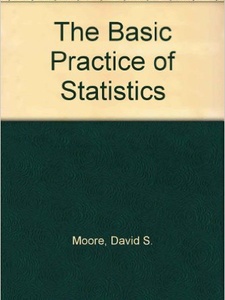Bí kíp Hướng dẫn Which measures of central tendency is obtained by calculating the sum of values and dividing this figure by dividing the number of values there are in… Chi Tiết
Hero đang tìm kiếm từ khóa Which measures of central tendency is obtained by calculating the sum of values and dividing this figure by dividing the number of values there are in… 2022-10-17 23:18:52 san sẻ Bí quyết về trong nội dung bài viết một cách Chi Tiết.
Recommended textbook solutions Statistical Techniques in Business and Economics15th EditionDouglas A. Lind, Samuel A. Wathen, 1,236 solutions  The Practice of Statistics for the AP Exam6th EditionDaren S. Starnes, Josh Tabor 2,673 solutions  Statistics for Managers Using Microsoft Excel8th EditionDavid F. Stephan, David M. Levine, Kathryn A. 1,374 solutions  The Basic Practice of Statistics4th EditionDavid Moore 150 solutions Measures of central tendency are numbers that tend to cluster around the “middle” of a set of values. Three such middle numbers are the mean, the median, and the mode. For example, suppose your earnings for the past week were the values shown in Table 1. Mean You could express your daily earnings from Table 1 in a number of ways. One way is to use the average, or mean, of the Median Another measure of central tendency is the median, which is defined as the middle value when the numbers are arranged in increasing or decreasing order. When you order the daily earnings shown in Table 1, you get $50, $100, $150, $350, If there is an even number of items in a set, the median is the average of the two middle values. For example, if we had four values—4, 10, 12, and 26—the median would be the average of the two middle values, 10 and 12; in this case, 11 is the median. The median may sometimes be a better indicator of central tendency than the mean, especially when there are outliers, or extreme values. Given the four The mean of these four salaries is $275,000. The median is the average of the middle two salaries, or $40,000. In this instance, the median appears to be a better indicator of central tendency because the CEO’s salary is an extreme outlier, causing the mean to lie far from the other three salaries. Another indicator of central tendency is the mode, or the value that occurs most often in a set of numbers. In the set of weekly  (read
 where Occasionally, you may have data that consist not of actual values but rather of grouped measures. For example, you may know that, in a certain working population, 32 percent earn between $25,000 and $29,999; 40 percent earn between $30,000 and $34,999; 27 percent earn between $35,000 and $39,999; and the remaining 1 percent earn between $80,000 and $85,000. This type of information is similar to that presented in a frequency table. The formula for a sample mean for grouped data is
 where For example, if 8 is the midpoint of a class interval and there are ten measurements in the interval, fx = 10(8) = 80, the sum of the ten measurements in the interval. Σ fx denotes the sum of all the products in all class intervals. Dividing that sum by the number of For example, consider the information shown in Table 3. Substituting into the formula:  Therefore, the average price of items sold was about $15.19. The value may not be the exact mean for the data, because the actual values are not always known for grouped data. As with the mean, the median for grouped data may not necessarily be computed Using Table 3, you can see that there is a total of 32 measures. The median is between the 16th and 17th measure; therefore, the median falls within the $11.00 to $15.99 interval. The formula for the best approximation of the median for grouped data is  where L is the lower class limit of the interval that contains the median, n is the total number of measurements, w is the class width, f medis the frequency of the class containing the median, and Σ f Consider the information in Table 4. As we already know, the median is located in class interval $11.00 to $15.99. So L = 11, n = 32, w = 4.99, f med = 4, and Σ f b= 14. Substituting into the
 In a distribution displaying perfect symmetry, the mean, the median, and the mode are all at the same point, as shown in Figure 1. Figure 1.For a symmetric distribution, mean, median, and mode  As you have seen, an outlier can significantly alter the mean of a series of numbers, whereas the median will remain at the center of the series. In such a case, the resulting curve drawn from the values Figure 2 shows a negatively skewed curve. Figure 2.A negatively skewed distribution, mean < median < mode.  Figure 3 shows a positively skewed curve. Figure 3.A positively skewed distribution, mode < median < mean. 
Which measure of central tendency is obtained by calculating the sum of values and dividing this figure by the number?The arithmetic mean of a dataset (which is different from the geometric mean) is the sum of all values divided by the total number of values. It’s the most commonly used measure of central tendency because all values are used in the calculation. Which measure of central tendency is obtained by calculating the sum of values and dividing this figure Brainly?The mean, often called the average, of a numerical set of data, is simply the sum of the data values divided by the number of values. What measure of central tendency is calculated by adding all the scores then dividing the sum of the number of scores?The arithmetic mean is the most common measure of central tendency. It is computed by summing all the scores (sigma or Σ) and dividing by the number of scores (N): Which measure of central tendency equals the sum of the data values in a set divided by the number of data values apex?Mean. The mean of a set of data is the sum of the data values divided by the number of values. |
Video Which measures of central tendency is obtained by calculating the sum of values and dividing this figure by dividing the number of values there are in… ?
Một số hướng dẫn một cách rõ ràng hơn về đoạn Clip Which measures of central tendency is obtained by calculating the sum of values and dividing this figure by dividing the number of values there are in… tiên tiến và phát triển nhất .
ShareLink Download Which measures of central tendency is obtained by calculating the sum of values and dividing this figure by dividing the number of values there are in… miễn phí
Bạn đang tìm một số trong những Chia SẻLink Tải Which measures of central tendency is obtained by calculating the sum of values and dividing this figure by dividing the number of values there are in… miễn phí.
#measures #central #tendency #obtained #calculating #sum #values #dividing #figure #dividing #number #values
